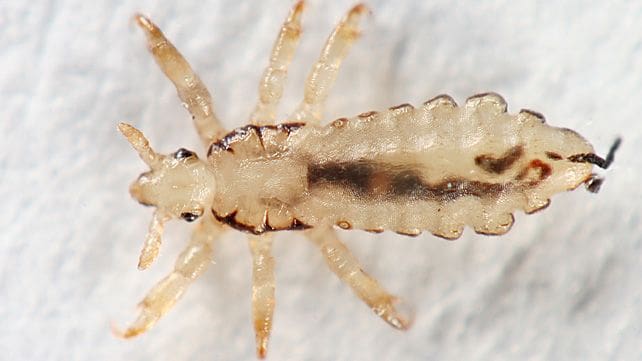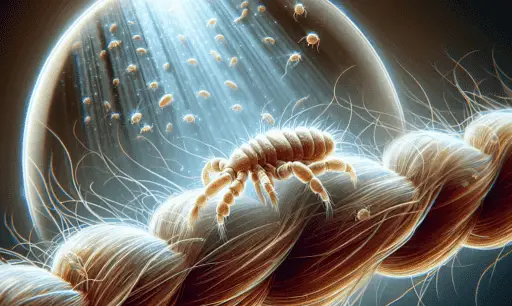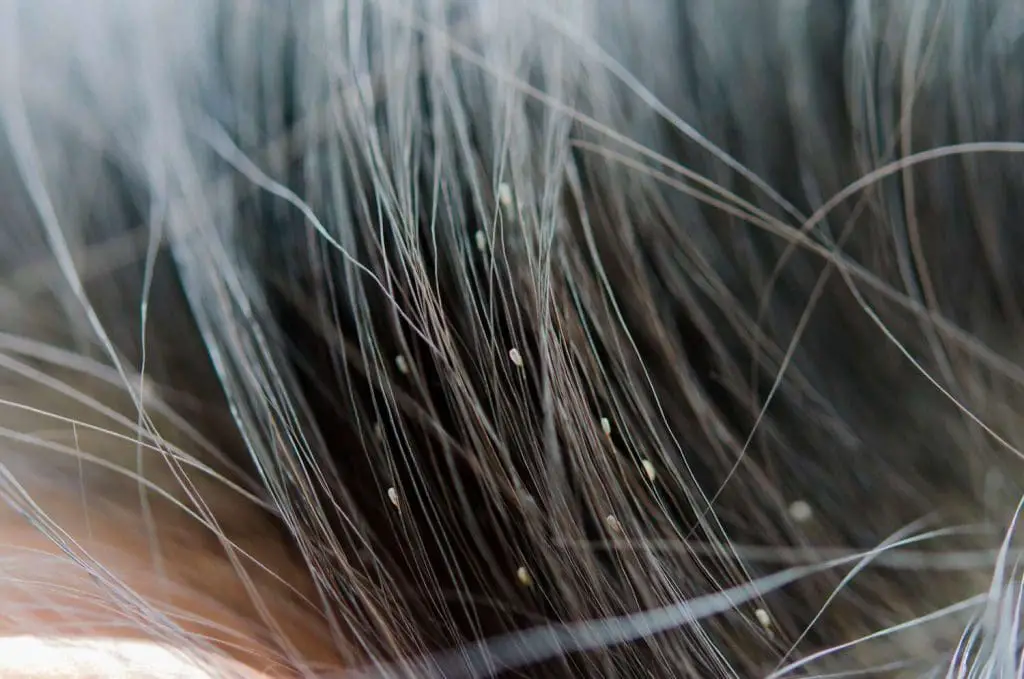You’re not alone if you’ve found yourself battling these pesky insects. Lice nits can be a nuisance, but fear not, there are effective ways to identify and combat them. In this article, we’ll explore the most popular methods for pinpointing lice nits, providing you with the knowledge and tools you need to take them on head-on. So, get ready to bid farewell to those pesky critters and regain your peace of mind.
Visual Inspection
When it comes to identifying lice nits, one of the most popular methods is through visual inspection. This involves directly examining the hair in search of any signs of lice or their eggs. There are a few techniques you can use to ensure a thorough examination.
Direct Examination of Hair
The first step in visual inspection is to carefully examine the hair, section by section, starting from the scalp and moving towards the ends. Look for any movement or signs of infestation, such as adult lice or unhatched eggs. Lice eggs, also known as nits, may appear as tiny yellow or white ovals that are firmly attached to the hair shafts.
Using a Magnifying Glass
For a closer look, using a magnifying glass can be extremely helpful. This will allow you to see the nits more clearly and determine if they are viable eggs or just debris. Look for any signs of tiny bugs or translucent eggs attached to the hair. A magnifying glass with good magnification power can make the task much easier.
Using a Microscope
For even more precise examination, using a microscope can provide a highly detailed view of lice nits. By magnifying the image, you can observe the structure of the nits, the presence of baby lice, and even any differences between dead and live eggs. This method offers a comprehensive assessment that can greatly enhance the accuracy of the diagnosis.
Wet Combing
Another popular method for identifying lice nits is wet combing. This technique involves wetting the hair and using a fine-tooth comb to comb through it, checking for any signs of lice or eggs. The process can be broken down into a few key steps.
Applying Conditioner
Before starting the wet combing process, it’s important to apply a generous amount of conditioner to the hair. This will help make the hair slippery, making it easier to comb through and increasing the chances of catching any lice or nits. Make sure to apply the conditioner to the entire length of the hair, from the scalp to the ends.
Using a Fine-tooth Comb
Once the hair is thoroughly coated with conditioner, use a fine-tooth comb to carefully comb through the hair. Start at the scalp and work your way down to the ends, ensuring that every section of the hair is combed. As you comb through, make sure to remove any lice or nits you come across and place them in a disposable bag for proper disposal.
Checking for Nits
While wet combing, pay close attention to any signs of nits. Look for small, oval-shaped eggs attached to the hair shafts. Nits are usually located very close to the scalp, and they can be easily mistaken for dandruff or other debris. To distinguish between nits and dandruff, try to slide the suspected egg off the hair shaft. If it doesn’t easily come off, it is likely a nit.
Black Light
Using a black light is another popular method for detecting lice nits. This method involves understanding the concept of how a black light works and utilizing it in a dark room for a more effective inspection.
Understanding the Concept
A black light works by emitting ultraviolet (UV) light, which is invisible to the naked eye. Certain substances, including lice nits, reflect this UV light, causing them to appear fluorescent. By using a black light, you can easily spot these fluorescent nits, making their identification much simpler.
Using a Black Light in a Dark Room
To use a black light for inspecting lice nits, start by choosing a dark room where the UV light will be more visible. When the room is dark, turn on the black light and carefully examine the hair, paying close attention to any areas that appear fluorescent. It is important to note that not all nits will glow under a black light, as the fluorescence depends on several factors such as the lice species and the age of the eggs. Therefore, it is recommended to combine black light inspection with other detection methods for a more accurate diagnosis.
White Paper Method
The white paper method is a simple yet effective technique for identifying lice nits. This method involves placing a white paper on the hair and inspecting it for any signs of eggs or lice.
Placing a White Paper on Hair
To begin the white paper method, place a piece of white paper, such as a sheet of plain printer paper, on a flat surface. Next, part the hair into small sections and press the paper against each section for a few seconds, ensuring good contact between the hair and the paper. Repeat this process for all sections of the hair.
Inspecting the Paper for Nits
After pressing the paper against the hair, carefully examine it for any signs of nits. Lice eggs are usually small and oval-shaped, and they may appear as yellow or white dots on the paper. If you notice any suspicious specks or eggs, use a magnifying glass or microscope to confirm their identity. This method can be particularly effective for detecting nits that may be difficult to see against the hair shaft.
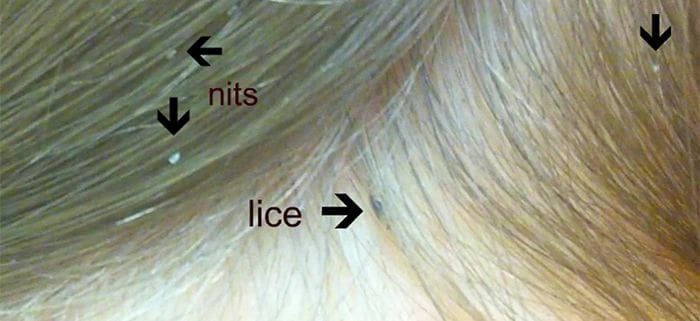
Fogging Method
The fogging method is another technique that can be used to identify lice nits. This method involves spraying a heavy hairspray onto the hair and examining any floating debris that may come loose.
Spraying a Heavy Hairspray
To start the fogging method, apply a heavy hairspray generously onto the hair. This will help stiffen the hair and potentially dislodge any hidden nits or lice. Make sure to apply the hairspray evenly across all sections of the hair.
Examining the Floating Debris
After spraying the hairspray, examine the hair for any floating debris or particles that may become dislodged. Pay close attention to any small specks or egg-like structures that may be present. Use a magnifying glass or microscope to inspect the debris more closely and determine if they are indeed lice nits or something else. This method can be useful in detecting nits that may be difficult to see during a regular visual inspection.
UV Light Device
Using a UV light device is an increasingly popular method for identifying lice nits. This method involves using a specialized device that emits UV light to detect the presence of lice or their eggs.
Using a UV Light Device on Hair
To use a UV light device for inspecting lice nits, start by choosing a device specifically designed for this purpose. The device will emit UV light, which may cause any lice or nits present on the hair to appear fluorescent. Carefully scan the hair with the UV light device, paying close attention to any areas that appear to glow or fluoresce.
Removing Nits with a Comb
If you spot any fluorescent areas that may indicate the presence of nits, use a fine-tooth comb to carefully remove them from the hair. Nits are usually glued firmly to the hair shafts, so it is important to be gentle yet thorough when trying to remove them. Comb through the hair in small sections, making sure to collect any nits you come across and dispose of them properly.
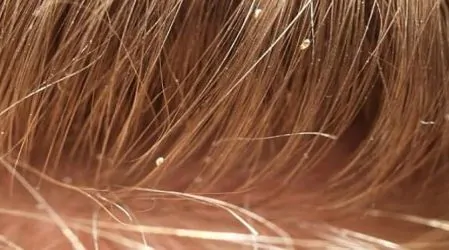
Professional Diagnosis
When it comes to identifying lice nits, seeking a professional diagnosis can provide a high level of accuracy. Trained professionals have the knowledge and expertise to detect lice and nits using specialized tools and techniques.
Visiting a Trained Professional
To receive a professional diagnosis, it is advisable to visit a healthcare professional, such as a dermatologist, pediatrician, or trichologist, who specializes in hair and scalp conditions. They will conduct a thorough examination of the hair and scalp, using tools like magnifying glasses, microscopes, or dermoscopes for a more detailed assessment. If lice or nits are detected, the professional can provide appropriate treatment options and guidance.
Trichoscopy Examination
One common tool used by professionals to diagnose lice nits is trichoscopy. Trichoscopy involves using a specialized handheld device with magnification capabilities to closely examine the hair and scalp. This method allows professionals to identify lice nits, assess the severity of infestation, and differentiate between live eggs and dead ones. Trichoscopy can help ensure an accurate diagnosis and guide the appropriate treatment plan.
Parents and Teachers Collaboration
Identifying lice nits is not only the responsibility of healthcare professionals. Parents and teachers play a crucial role in detecting and preventing the spread of lice within communities and schools. Collaboration between parents and teachers can greatly enhance the effectiveness of identification efforts.
Monitoring Student’s Behavior
Teachers can monitor students for any signs of lice infestation, such as excessive itching or visible lice or nits in the hair. If a student is suspected of having lice, parents should be informed so that they can take appropriate action. Similarly, parents should communicate with the school if their child has been diagnosed or treated for lice, allowing teachers to be vigilant and take necessary precautions.
Sharing Information
Parents and teachers should actively share information about lice prevention, detection, and treatment. This includes educating parents and students about the signs and symptoms of lice infestation, as well as effective methods for identifying nits. By collaborating and disseminating accurate information, parents and teachers can work together to minimize the spread of lice and promote a healthy learning environment.
Inspecting Siblings
When lice are detected in one family member, it is crucial to inspect all other household members, especially siblings. Lice can easily spread from one person to another, so thorough inspections of siblings’ hair should be conducted. This can prevent lice from going unnoticed and help in identifying and treating all affected individuals simultaneously, reducing the risk of reinfestation.

Automated Detection
Technological advancements have led to the development of AI-powered apps that can assist in identifying lice nits. These apps use image recognition algorithms to scan and identify lice or nits, providing an automated detection method.
Using AI-powered Apps
To utilize an AI-powered app for lice detection, you can download a reputable app onto your smartphone or electronic device. Follow the instructions provided by the app to capture clear images of the hair or the suspected nits. The app will then process the images using its algorithms and provide a diagnosis based on the analyzed data. While these apps can be a helpful tool, it is important to note that they may not always provide 100% accuracy, and manual confirmation is recommended.
Scanning and Identifying Nits
Once the images are captured, the AI-powered app will analyze them to identify any signs of lice or nits. The algorithm may assess factors such as shape, color, and size of the detected objects to determine if they are lice or nits. The app will then provide a report indicating the presence or absence of lice nits, enabling users to take appropriate steps for further inspection or treatment.
Lice Specimen Inspection
Another method for identifying lice nits is through the inspection of actual lice specimens. This can be a useful technique when other methods are inconclusive or to confirm a diagnosis.
Collecting a Lice Sample
To collect a lice sample, part the hair and use a fine-tooth comb to comb through the hair close to the scalp. Look for live lice and carefully remove them, placing them in a container or plastic bag. It’s important to handle the live lice with care to prevent them from escaping or spreading. Additionally, you can collect any suspicious nits that you come across during the combing process.
Examining the Sample for Nits
Once you have collected a lice sample, carefully inspect the live lice and any nits under a magnifying glass or microscope. Look for the characteristic shape, color, and size of lice nits. If you find any viable nits attached to the live lice or within the collected sample, this confirms the presence of lice infestation. This method can provide concrete evidence for diagnosis and help determine the appropriate course of treatment.
